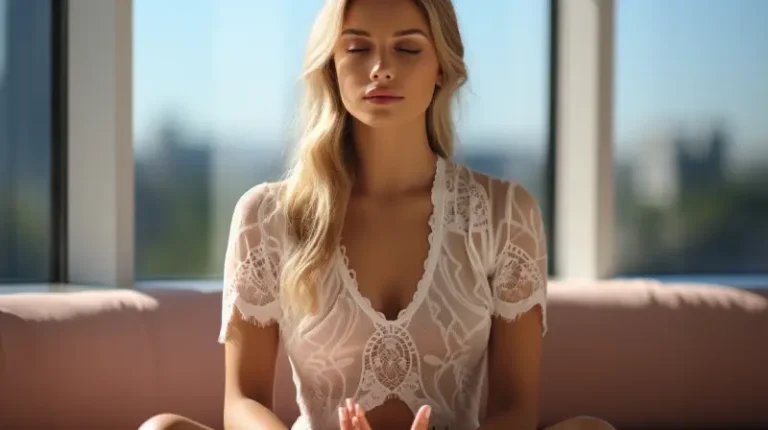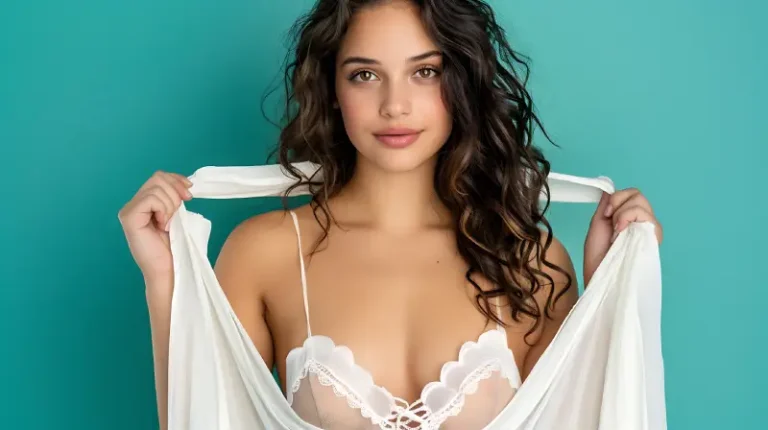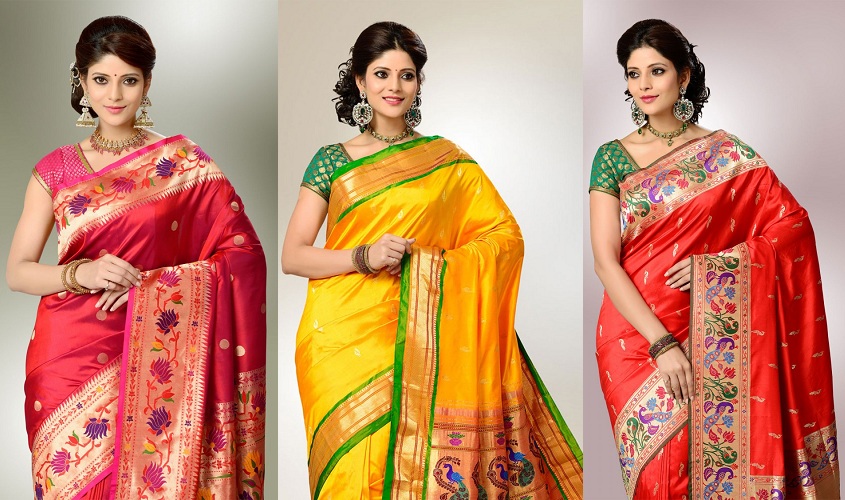
Paithani Saree- A Really Precious Possession
Sarees are an integral part of Indian culture. These are not only popular in the Indian states, in fact, numerous women of different parts of this globe are fascinated with the beauty of Indian sarees and as a result, they keep adding those in their wardrobes. Indian culture has actually given birth to various exotic weaving traditions. Paithani is one of those. This traditional craft dates to 200 BC and till date these sarees are widely worn by Maharashtrian women during religious and social functions. Besides, these sarees also works as the precious possession of a family as the Maharashtrian saas pass these on to her bahus.
Different types of Paithani sarees:
Paithani sarees can be of different types. The majority of these are classified by the weaving styles, the colors on display and the motifs created on these sarees. Here are the details of some of the types:
- A famous motif found of different paithani sarees is the Bangadi Mor. These sarees come with bangle shaped designs decorated on the pallu. Along with the design of a dancing peacock, this motif adds a royal touch and royal appeal to the sarees. Therefore, these sarees are really expensive.
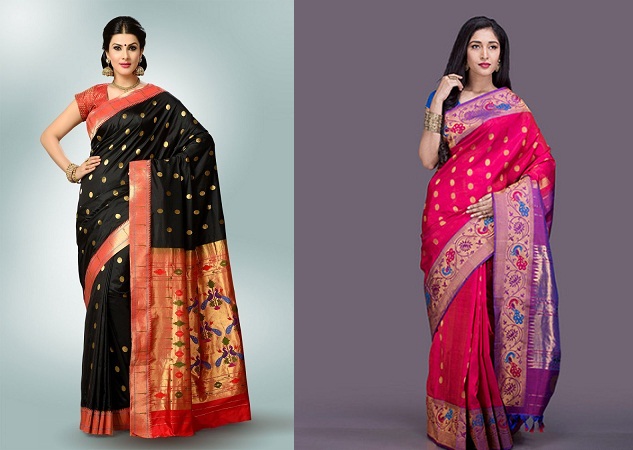
- Another popular motif of paithani sarees is the lotus brocade. Here, the lotus motif is found on the pallu or border of the saree in more than five to eight shades.

- Munia brocade is another well known motif, which is basically an embellishment of parrot. This green bird motif is neatly woven on the borders and pallu drapes of paithani sarees.
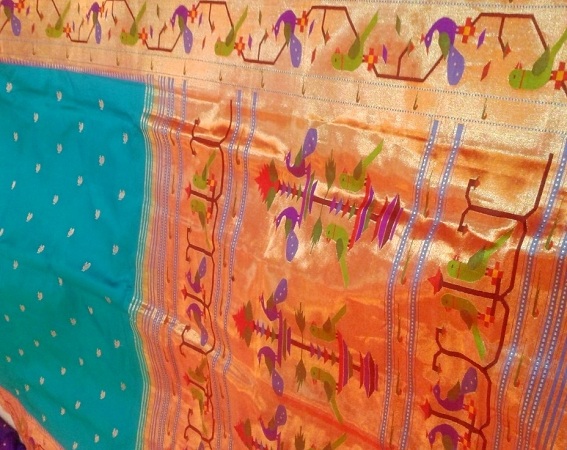
- Paithani sarees weaved in kad or ekdhoti styles with paisa buttis or wattana and narali borders are hot trends during weddings.
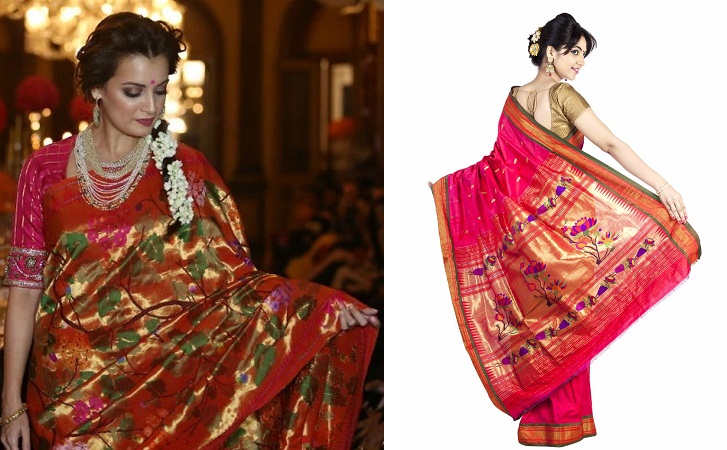
- Some of the paithani sarees also come with some design weaves that add a great touch of royalty. Common examples of these sarees are interlocked styles or kadiyal borders.
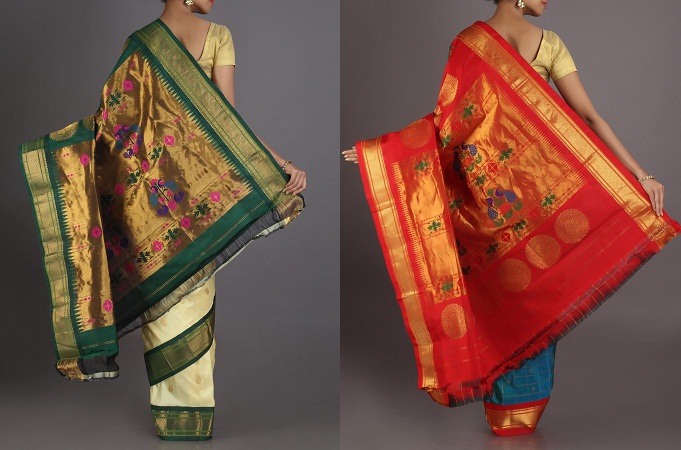
- Sirodhak is another simple yet elegant form of paithani sarees, which is available in pure white color.
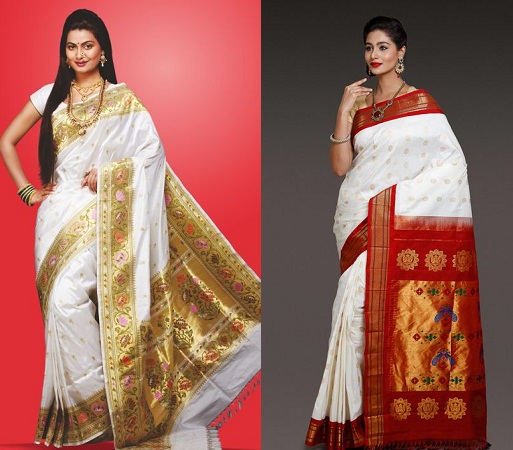
- The paithani sarees are also noticed with various styles created with colors like kalichandrakala or black sarees with red borders that denote the power of goddess Kali. Besides, Raghu is another style of paithani saree where the beauty of parrot is worshipped in green color.
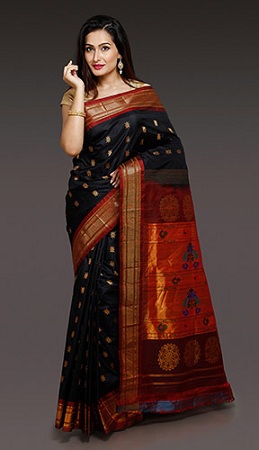
The grandeur of paithani silk:
Named after a little town located near Aurangabad, these sarees are made of silk and hand woven. The result is a luxurious touch and appeal, which is widely worshipped by both the wearers and makers.
The best thing about choosing Paithani sarees for special occasions like wedding or any other special events or celebrations is that these sarees come with a wide variety of styles and designs to choose from. The majority of the paithani saree designs boast traditional touch, therefore getting contemporary designs in these sarees will be a little difficult.
Some common features of Paithani sarees:
- These sarees come with borders with oblique square designs
- Senior aged ladies wear Paithani sarees with plain and spotted designs
- The pallus of these sarees are embellished with the peacock designs
- The weaves of these sarees create kaleidoscope effects on these sarees both breadth wise and length wise
- Most of the paithani sarees are created from silk and gold fabrics and some are created from zari and cotton.
- Each thread used to weave paithani sarees is first treated with caustic soda and therefore spun to the finest design in the gold threads from Surat. This thing makes Paithani a really expensive saree to buy
- The most popular paithani sarees are ciddle-gatta, charkha and china silk paithani
- The zari used to weave paithani sarees is prepared from metallic and pure silver yarn or sometimes very fine gold threads are also used
- The pallus are paithani sarees are embellished with motifs like the panja, muniya, the Laher, the Barwa, the Asawall or the Muthada.
- Famous motifs created on the paithani sarees include the Hans, Gautam Buddha, The Asawall, the Ashraffi, the Tota-Maina, the Bangadi Mor, The Amar Vell, The Narali motif, The Humarparinda and many more.
How to identify a real paithani saree?
The main element of the paithani saree is the completely hand woven pallu and border. Woven between the warp and weft threads, this saree almost creates a mirror image of the face design at the opposite side of the saree. This is the difference between a handmade and machine made paithani sarees, where the mesh of threads are visible in the reverse side of the sarees.
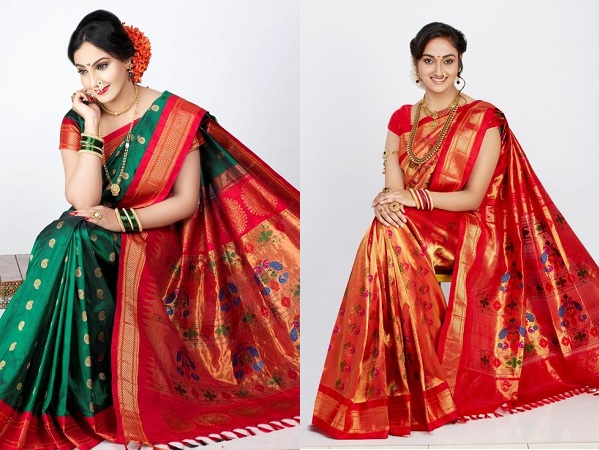
These days, various smart techniques are applied to the machine made versions of paithani sarees like as trimming the mesh of threads carefully to offer the appearance of real paithani sarees.
But in case you are finding wide range of shades in same design, too much shine or non-natural color ranges in the sarees, then definitely these sarees are not authentic paithani. So, to test the authenticity of the silk, remove several strands from warp and weft threads and individually burn those. Those will smell like human hair. This way, you will find the differences between synthetic and natural mixture.
How to preserve paithani sarees?
Paithani sarees should be used more often. After using these sarees every time, allow the sarees to breathe for several hours and therefore wrap those in muslin covers and keep those in the wooden chest. Avoid board or mica cabinets as these often contain chemicals. Don’t forget to change the fold of these sarees after every use.
While these are in storage offer good air circulation and in case you find creases in these sarees after wearing, only roll press these sarees. Remember, don’t iron these. To protect these sarees from insects, use a few pieces of cloves. In case you find any sign of damage or tear, consult with the manufacturer and get that fixed. But one thing you must keep in mind is that the more you will use these sarees, these will last longer.



